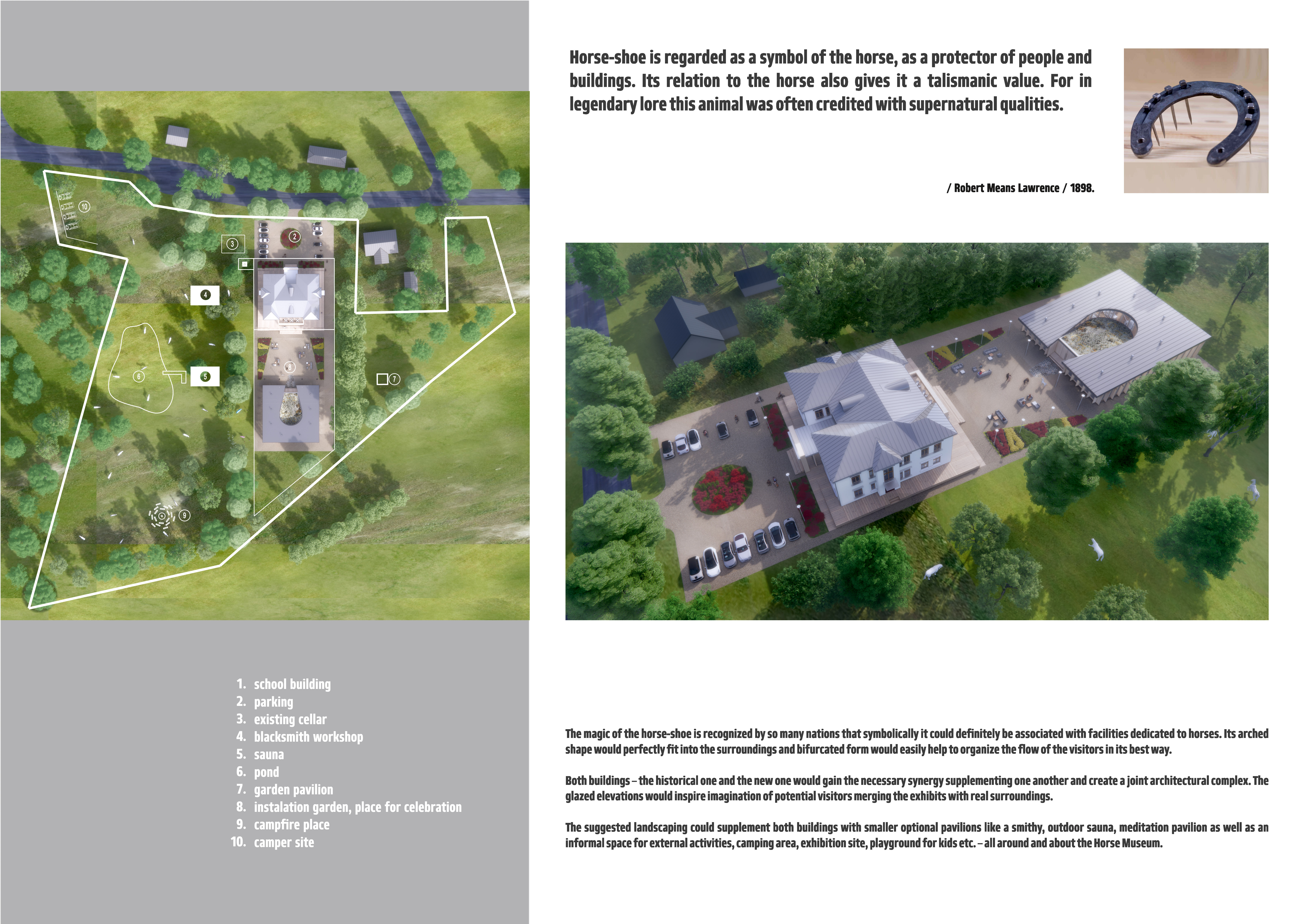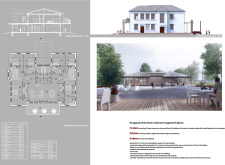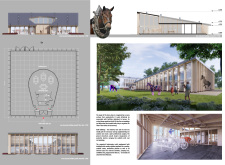5 key facts about this project
The design focuses on converting an abandoned school building in Latvia into a center for horse culture. This adaptive reuse highlights the importance of horses in the region's history. Central to the overall idea is the horse-shoe, which represents protection and serves as a guiding symbol throughout the project. The blend of historical and modern design elements aims to create a single cohesive complex that enhances the experience for visitors while honoring the original structure.
Design Integration
New architectural features work in harmony with the existing school building. The design creates a conversation between the old and new, allowing for a smooth transition across the site. The horse museum occupies a key position on the ground floor, serving as the main focus that draws visitors through the entrance. From there, they are led to a garden terrace and parterre, strengthening the link between the museum's interior and the surrounding environment.
Spatial Organization
The interior layout considers the needs of different users, including museum visitors and those staying overnight. Guest accommodations are thoughtfully arranged on the upper floor, with several apartments grouped around a shared sitting room. This setup provides privacy while still encouraging interaction among guests. Historical entrances on either side of the building facilitate smooth movement and keep the museum experience uninterrupted.
Landscaping and Amenities
The landscape surrounding the building is designed to improve visitor engagement. It incorporates smaller pavilions such as a smithy, outdoor sauna, and spaces for meditation. These elements broaden the experience beyond just the museum, offering informal areas for camping and children's play. By doing this, the design deepens visitors' connection to the themes celebrated within the museum.
Material Considerations
The design features glass for the building’s elevations, allowing plenty of natural light inside while creating clear views of the landscape outside. Wood is also a significant material, expected to enhance the interior and landscaping. This choice adds warmth and a tactile quality, making the space more inviting.
Thoughtful design choices ensure a practical approach to blending traditional elements with modern needs. Each aspect of the project aims to create a welcoming experience that centers on horses and their cultural significance. The extensive use of glass enhances the visual relationship between the indoors and outdoors, allowing the landscape to become an integral part of the architectural experience.





















































